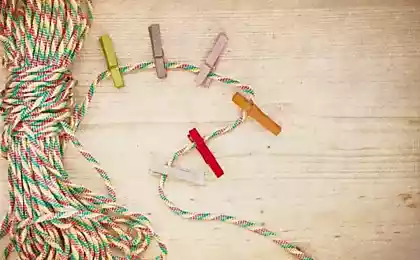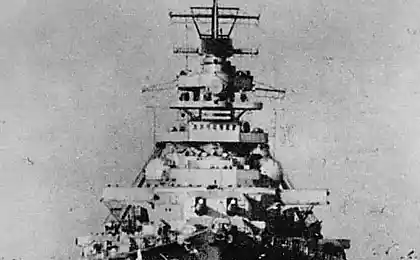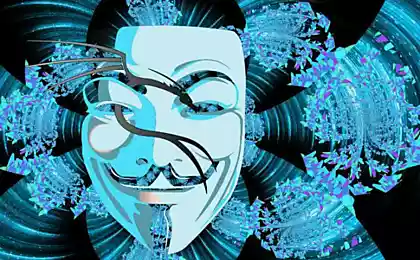198
5 simple nodes that may be useful to you
There are actually hundreds of different nodes for a variety of purposes. Some of them are so complex that they can be mastered only under the guidance of specialists. We want to introduce you to some of the simplest and most versatile nodes that can help you in various life situations.
In everyday life, we often face the need to pack, fasten or tie something. Usually in this situation, we take a string in our hands and begin to enthusiastically come up with unthinkable designs of knots, twists and weaves, which then are decidedly impossible to unravel. So let's learn how to tie a few more popular nodes.
Enterprise knot This is one of the main nodes that have been attached to the bow string since ancient times. He is sometimes called the king of knots for his simplicity and versatility. It is used to obtain a non-tightening (!) loop at the end of a straight rope, to fasten the rope to rings or eyelets, to bind ropes.
Simple bayonet. Node "Simple bayonet" also allows you to tie a non-tightening loop, and it is used mainly in those places that require especially reliable mounting. For example, such nodes have long been used in the fleet to secure mooring ends for berthing devices, to fasten towing cables and heavy loads, and so on.
Tautline If you need to tie something, but subsequently be able to adjust the length of the rope, then a special node will come to the rescue, allowing you to easily change the size of the loop. Especially often it is used by tourists to install tents and tension awnings.
Eight. This is a traditional knot used whenever you need to attach something to a rope. It is easy to knit, it withstands heavy loads, and in the future such a knot can be quite simply untied to free the rope.
Node "Eight" has two options. The first is when you have one free end. It looks quite complicated, but once you understand the sequence of actions, everything will turn out by itself.
The second option can be used when both ends of the rope are free. This knot is so simple that it can be tied with your eyes closed, and at the same time it is completely reliable.
Driver's unit A truly legendary knot that has many different names and even more practical applications. This unit is used in construction work, transportation, tourism and other cases when you need to tightly and tightly fix something.
And what other nodes do you consider practical and necessary for mastering?
P.S. And remember, just changing our consumption – together we change the world!
Source: lifehacker.ru/2015/08/05/5-uzlov/
In everyday life, we often face the need to pack, fasten or tie something. Usually in this situation, we take a string in our hands and begin to enthusiastically come up with unthinkable designs of knots, twists and weaves, which then are decidedly impossible to unravel. So let's learn how to tie a few more popular nodes.
Enterprise knot This is one of the main nodes that have been attached to the bow string since ancient times. He is sometimes called the king of knots for his simplicity and versatility. It is used to obtain a non-tightening (!) loop at the end of a straight rope, to fasten the rope to rings or eyelets, to bind ropes.
Simple bayonet. Node "Simple bayonet" also allows you to tie a non-tightening loop, and it is used mainly in those places that require especially reliable mounting. For example, such nodes have long been used in the fleet to secure mooring ends for berthing devices, to fasten towing cables and heavy loads, and so on.
Tautline If you need to tie something, but subsequently be able to adjust the length of the rope, then a special node will come to the rescue, allowing you to easily change the size of the loop. Especially often it is used by tourists to install tents and tension awnings.
Eight. This is a traditional knot used whenever you need to attach something to a rope. It is easy to knit, it withstands heavy loads, and in the future such a knot can be quite simply untied to free the rope.
Node "Eight" has two options. The first is when you have one free end. It looks quite complicated, but once you understand the sequence of actions, everything will turn out by itself.
The second option can be used when both ends of the rope are free. This knot is so simple that it can be tied with your eyes closed, and at the same time it is completely reliable.
Driver's unit A truly legendary knot that has many different names and even more practical applications. This unit is used in construction work, transportation, tourism and other cases when you need to tightly and tightly fix something.
And what other nodes do you consider practical and necessary for mastering?
P.S. And remember, just changing our consumption – together we change the world!
Source: lifehacker.ru/2015/08/05/5-uzlov/
In Australia have created an electric sports car with solar panels
12 investing rules from Yuri Milner























